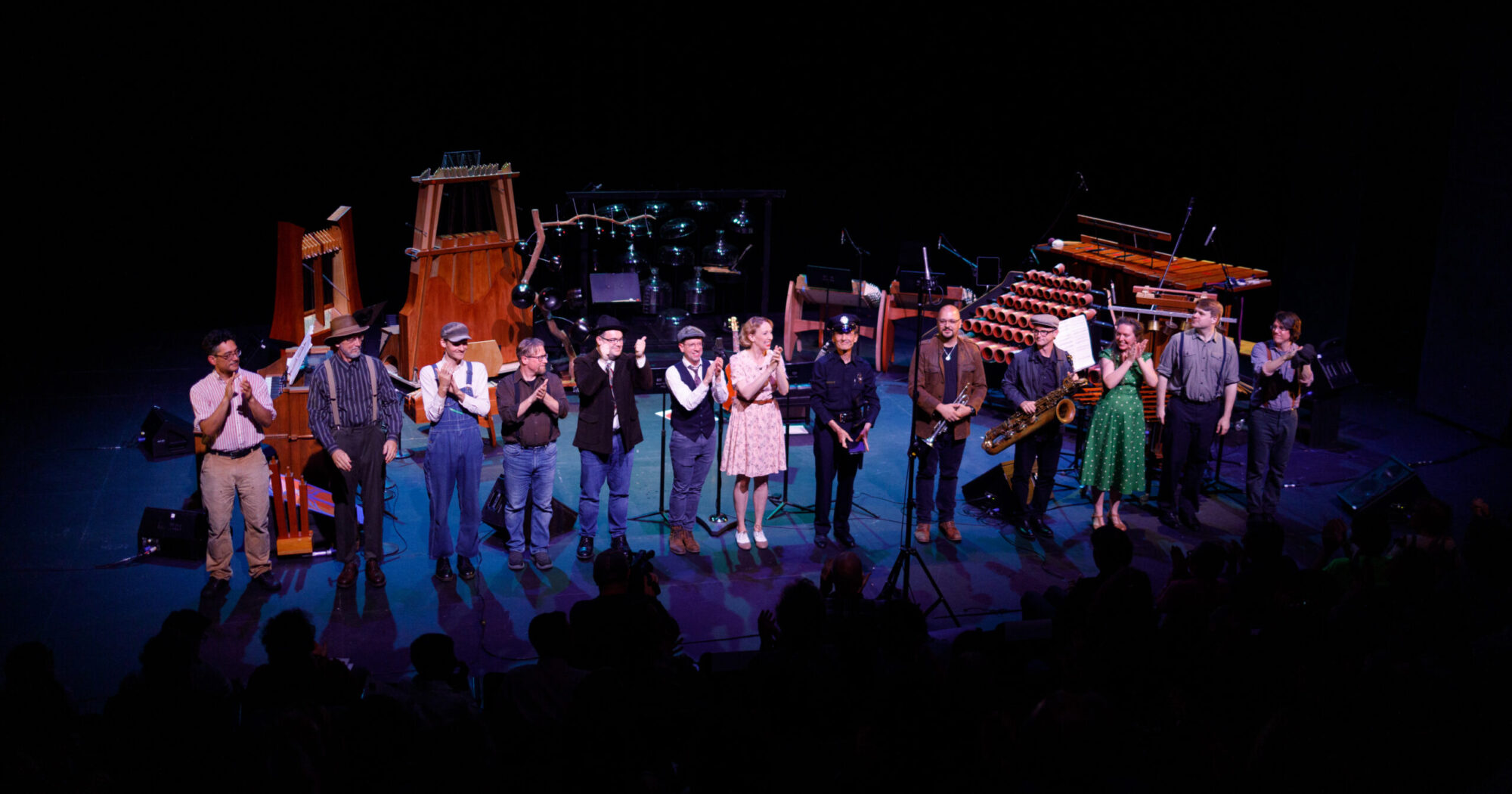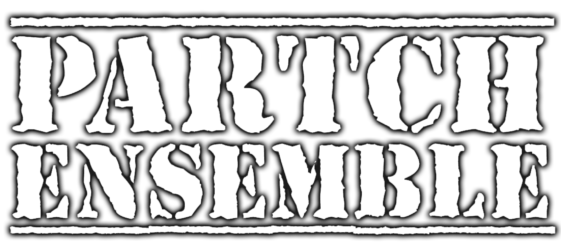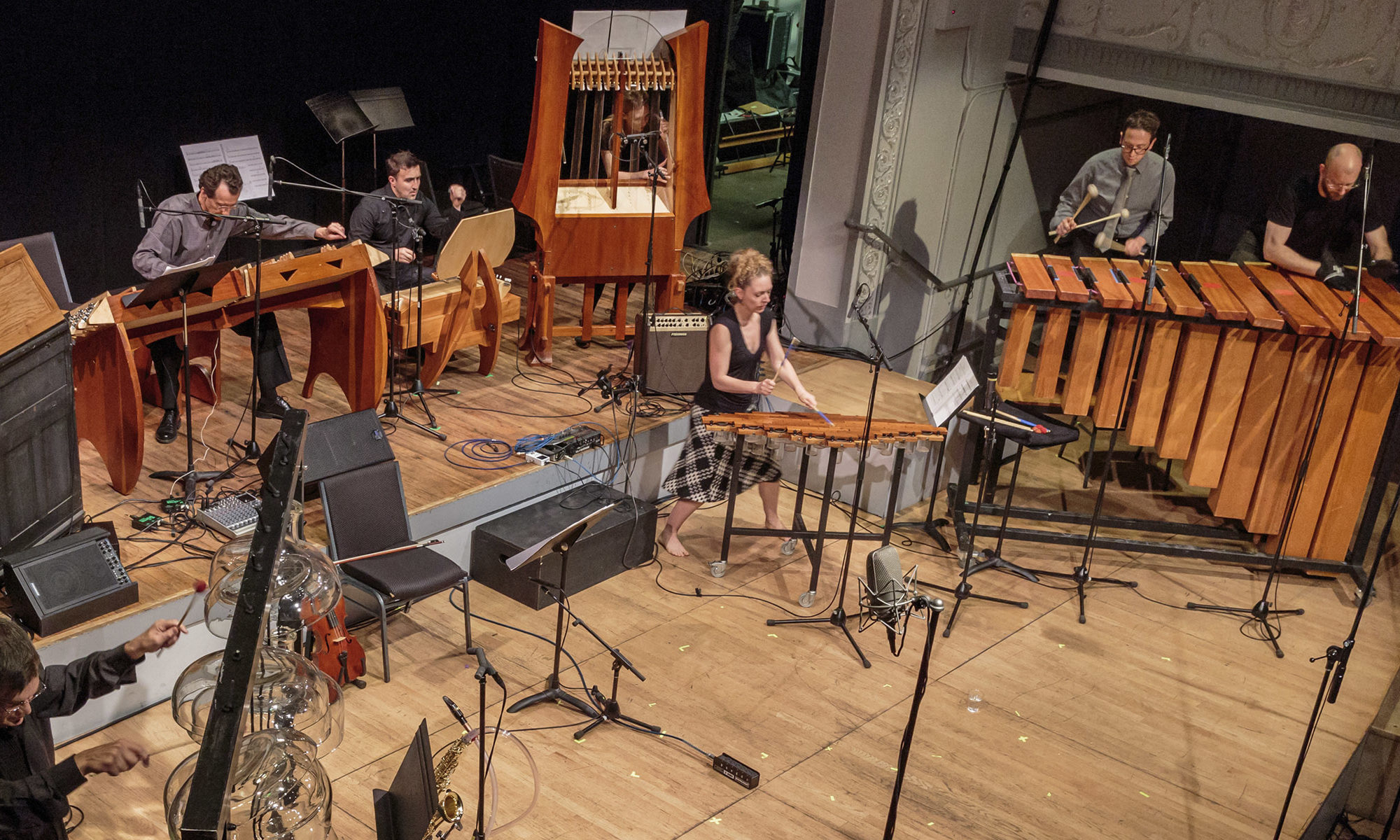re-Genesis of a Music
~ A tale of obsession ~
by John Schneider
Organ Transplant, pt.2
“This is no musical instrument…!”
In 1934, Partch was awarded a grant of $1,500 from the Carnegie Corporation for a year of research in Europe. It became a most amazing odyssey during which he spent many weeks at the British museum digesting ancient and modern volumes on music, visiting the South Kensington Museum where he saw the microtonal organs constructed by Colin Brown, Bosanquet, and General Perronet Thompson that he had only read about in Helmholtz’s Sensations of Tone:

Colin Brown’s Voice Harmonium

Bosanquet’s Enharmonic Harmonium
He also met early music specialists Arnold Dolmetsch and Kathleen Schlesinger, as well as the poets Ezra Pound and W.B. Yeats. As Partch reminisced in his journal Bitter Music:
“This is money and a consummation in the recognition of my endeavors that have been long coming—eleven years of effort and three years of begging are behind it—and I wonder if I still have the energy, having spent so much in winning the award to execute my projects:
Project 1: Completion of my Trails of Music, the theoretical basis of my work. I had rewritten this manuscript almost every year since 1926, but the historical background was still woefully deficient, and I proposed to prepare histories of intonation, and of the spoken word in music, at the British Museum in London.
Project 2: The building of a true chromatic organ, or, if this is a misuse of the word true, an organ at least three times as chromatic as the piano. The keyboard of this instrument I had already constructed, as a model.
Project 3: the setting of the entire drama King Oedipus, version by the Irish poet William Butler Yeats, to my music, preserving throughout the vitality of the spoken words…
I could spend the whole sum of $1,500 on my chromatic organ—my beautiful dumb keyboard—in a single disbursement, and waste no part of a penny. After all, people spend a thousand dollars on a piano, which is standardized and in mass production, and think nothing extravagant in it. And yet for my keyboard, only one of its kind—parts for which have to be specially made—I can spend, at most, half that much. For my $1,500 must cover all expenses—traveling, living—for a year, and instrument building. In that case it will, by gollies.”
And so it did. He visited Yeats in Dublin, transcribing the exact pitch inflections of the poet’s personal reading of King Oedipus, also travelling to France and Italy.
Upon his arrival in London, Partch procured some brilliantly colored celluloid and spent three weeks constructing a new keyboard in his rented room after long days at the British Museum:

One 2/1 (Octave) of the Ptolemy Keyboard Proper

One Section of the Ptolemy Diamond Keyboard
Before leaving on his travels to the Continent, he canvassed several London organ builders who politely declined the project of building a custom instrument after learning that he had only 100 pounds to spend. He finally engaged Edwin Malkin of Wimbledon who came up with an idea to simplify the mechanical difficulties, and was willing to construct the instrument for $375, providing that Partch produced the keyboard and tune the instrument:
“Shall I gamble? I this idea fails it means I will have no chromatic organ. But on the other hand, if I won’t gamble, I won’t win, and I so hate the idea of going on with only my one little viola to prove all my work.
I gamble, and I am handed a paper: “Received of Harry Partch Esq. £60 on account for organ to be built to specification at £70. With thanks…”
— Bitter Music
Upon his return from Europe three months later, Partch spent two weeks in Wimbledon tuning the reeds as promised, using a special set of tuning forks that he previously had made to specific frequencies for this very purpose.
And the result? His diary tells us:
Wimbledon, London, March, 1935. The chromatic organ is finished! But alas! The wording has a double meaning. I spend two weeks tuning the reeds, and in its intonation it proves all of my contentions, and fulfills my finest hopes. It has forty-three tones to the octave over a three-octave extent, and 268 rainbow-colored keys in a practical analogy with tones.
But its mechanical workings—the ideas that made its construction cheap—are faulty. The action is extremely uneven, and so hard that playing a two-octave scale tires even this piano-trained hand!
But I cling to the hope that adjustments can be made, and I find that it will cost only $40 to ship it direct to Los Angeles. I get an article and a picture in Musical Opinion, the monthly magazine, as a record.
Thus ends Project 2:
 Illustration from “A New Instrument,” MUSICAL OPINION—June 1935
Illustration from “A New Instrument,” MUSICAL OPINION—June 1935
A few days later,
“Wimbledon, London, March, 1935. I am talking about possible difficulties with the American customs over my chromatic organ.
“Just say to them,” observes my organ builder, “Listen to this—this is no musical instrument!’”
He has no sympathy for anything post-Beethoven.“
On March 30th, projects ended, money spent, Partch boarded as the only passenger on a freighter loaded with china clay, bound for Portland, Maine, and an America deep in the grips of the Great Depression.


